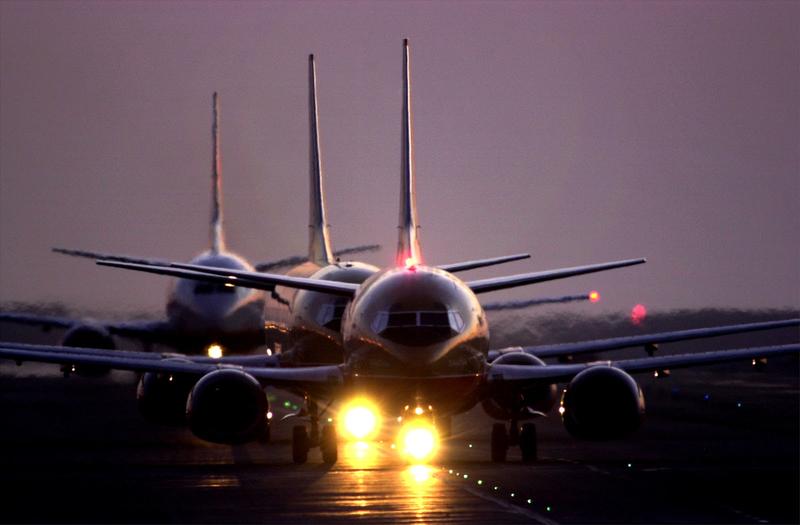What Is Interesting About Jet Powered Funny Cars Fun Facts About Jet Powered Funny Cars

In late March, as air travel activity levels in the U.S. continued to rise, a group of researchers affiliated with the National Renewable Energy Laboratory (NREL) in Golden, CO, announced the discovery of a new way to craft jet fuel from everyday food waste. The findings, published in the peer-reviewed journal Proceedings of the National Academy of Sciences, outline one possible way to reduce the negative impact of passenger flights on the environment — by creating sustainable paraffin (also known as kerosene) from food waste and using it to power jet engines.
As the NREL study notes, the aviation industry currently accounts for over 2.5% of the world's greenhouse gas emissions, and, without decisive action from the industry, that percentage is expected to increase in the next decade. The study's findings mark a potential step forward for the aviation industry, which has struggled in recent years to mitigate its damaging effects on the environment.
Can the Aviation Industry Scale Sustainably Post-Pandemic?
Now that over 30% of folks in the U.S. have received at least one of the two vaccine doses needed to achieve immunity against COVID-19, air travel is on the rise again. As of mid-April, airports are still seeing around 50% fewer travelers than the same time period in 2019, which saw over 2 million travelers per day. While we're definitely not back to pre-pandemic activity levels, the number of travelers has been steadily increasing through 2021 — a sign that Americans, possibly suffering from pandemic fatigue and encouraged by a successful vaccine rollout, are eager to get back to some semblance of normal life.

While an increased number of travelers is undoubtedly good news for the aviation industry's bottom line, it also poses an urgent challenge: How can airlines reduce carbon emissions from flights as the number of flights increases?
Back in 2009, the International Air Transport Association (IATA), an aviation market group that represents most major airlines (including Delta, American Airlines, United, JetBlue and Southwest) set an ambitious goal: to reduce CO2 emissions by 50% by the year 2050. IATA's plan also included a cap on emission levels starting in the year 2020. Development of sustainable jet fuel technology is one of the four initiatives that IATA has outlined as necessary to reach its goals. The other three initiatives, making up what IATA calls the four "pillars" of the aviation industry, include more efficient aircraft operations, airport and air traffic control infrastructure improvements, and finally market-based measures (like economic incentives to reduce emissions and carbon offsetting measures), to make up the difference.
Development of sustainable forms of jet fuel can go a long way towards meeting IATA's emissions reduction targets. In fact, the authors of the NREL study found that sustainable fuel made from food waste "could enable up to 165% reduction in greenhouse gas emissions relative to fossil jet [fuel]."
Amazingly, the study found that the environmental benefits of making jet fuel from food waste wouldn't be limited to the aviation industry. Today, the vast majority of food waste ends up in landfills, where it eventually converts into methane gas, contributing to harmful emissions. The study's authors have proposed that using food waste to make jet fuel would have the added benefit of significantly reducing emissions from methane gas in landfills.
The science behind the study's findings hinges on the newfound ability to disrupt the natural chemical process that typically turns what's called "wet waste" (made up of food scraps, sewage and wastewater) into methane. In disrupting this process, researchers were able to produce volatile fatty acids (VFA) from the waste instead of the usual methane. These VFA can then be turned into sustainable paraffin using catalytic conversion, a process wherein toxic fuel substances are converted into lighter, less corrosive, more environmentally friendly fuels using a catalyst. Contemporary catalytic conversion typically uses minerals called zeolites as catalysts due to their ability to purify and filter out harmful chemicals. These properties are what make zeolites useful in other common household products such as detergents and water purification systems.

The resulting product, paraffin — often referred to as kerosene — is a material frequently used in jet fuel. The study's authors found that mixing 70% paraffin made from wet waste with 30% traditional jet fuel resulted in a new, more sustainable form of jet fuel that still met federal purity and quality standards for airplane fuel.
An additional benefit of this new fuel is that its production results in 34% less soot than traditional jet fuel types. Soot content in jet fuel is a major contributor to contrails, which have a warming effect on the atmosphere that is potentially as damaging as CO2 emissions, according to researchers. In fact, research suggests that non-CO2 emissions of soot, water vapor and black carbon currently account for two-thirds of the environmental damage caused by air travel.
What's Next for the Industry's Green Initiatives?
While this may all seem like pretty straightforward good news, it's important to keep in mind that the development of sustainable jet fuels is only one element of the work that needs to be done in order to meet the goals set by IATA and get the aviation industry on a greener trajectory.

"Sustainable aviation fuel is not a silver bullet," according to the study's lead author Derek Vardon. Furthermore, with demand for passenger flights set to double by the year 2050, environmental groups have warned that, without a reduction in the number of flights taken by individuals in the coming years, it will be even more challenging to offset environmental damage caused by the industry.
To add to that, IATA and other aviation groups have noted that necessary improvements to make airport operations and infrastructure more sustainable, as well as the development of green jet fuel solutions at scale, will require a significant investment. It's encouraging, then, that on April 8, the U.S. Department of Energy announced the release of $61.4 million in funds for companies and researchers developing biofuel technology, with the aim of supporting research like Vardon's and ultimately reducing carbon emissions.
The research team behind the NREL study has partnered with Southwest Airlines to start testing the fuel in passenger planes as soon as 2023. While this, coupled with investments from the federal government, certainly represents progress, the fact remains that effectively reducing carbon emissions from flights will require both a highly coordinated and comprehensive industry-wide effort, as well as individuals' willingness to reconsider personal travel habits. However, taken together, the work being done on alternate sources of jet fuel and the industry's willingness to work at reducing environmental damage can offer a potential way forward into a new, greener post-pandemic future.
Source: https://www.ask.com/lifestyle/sustainable-jet-fuel-post-pandemic-future?utm_content=params%3Ao%3D740004%26ad%3DdirN%26qo%3DserpIndex
0 Response to "What Is Interesting About Jet Powered Funny Cars Fun Facts About Jet Powered Funny Cars"
Postar um comentário